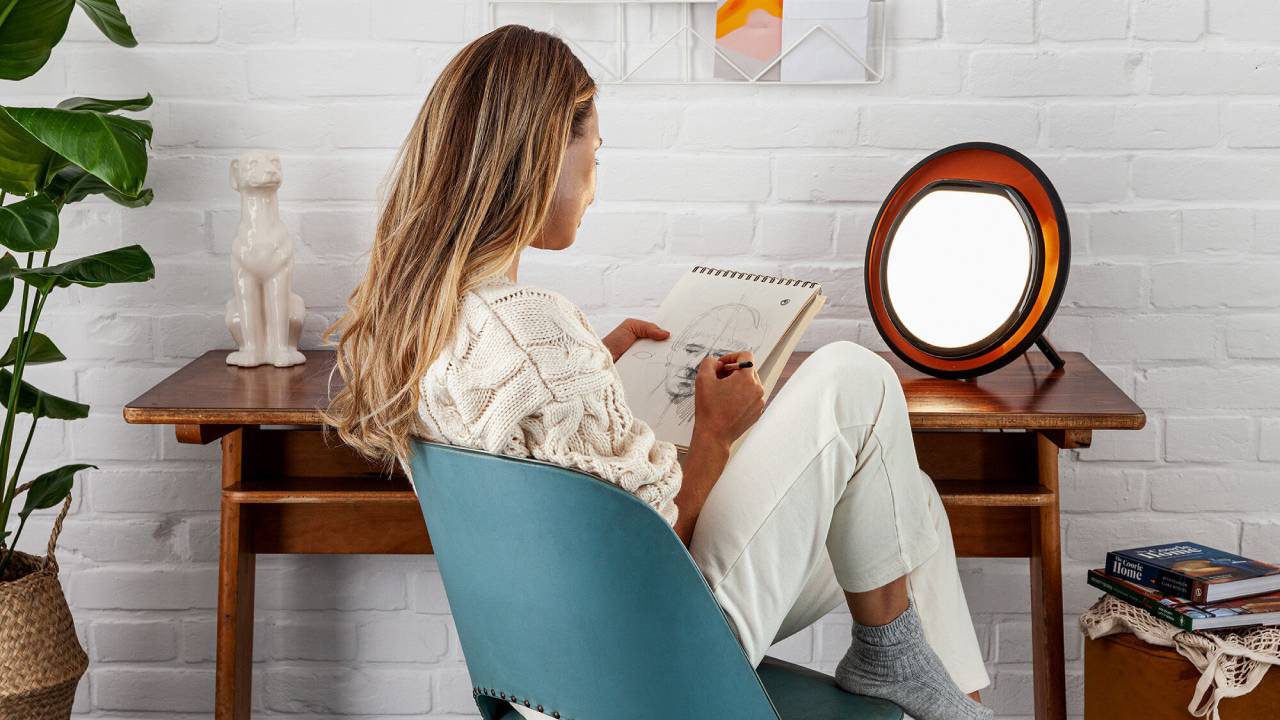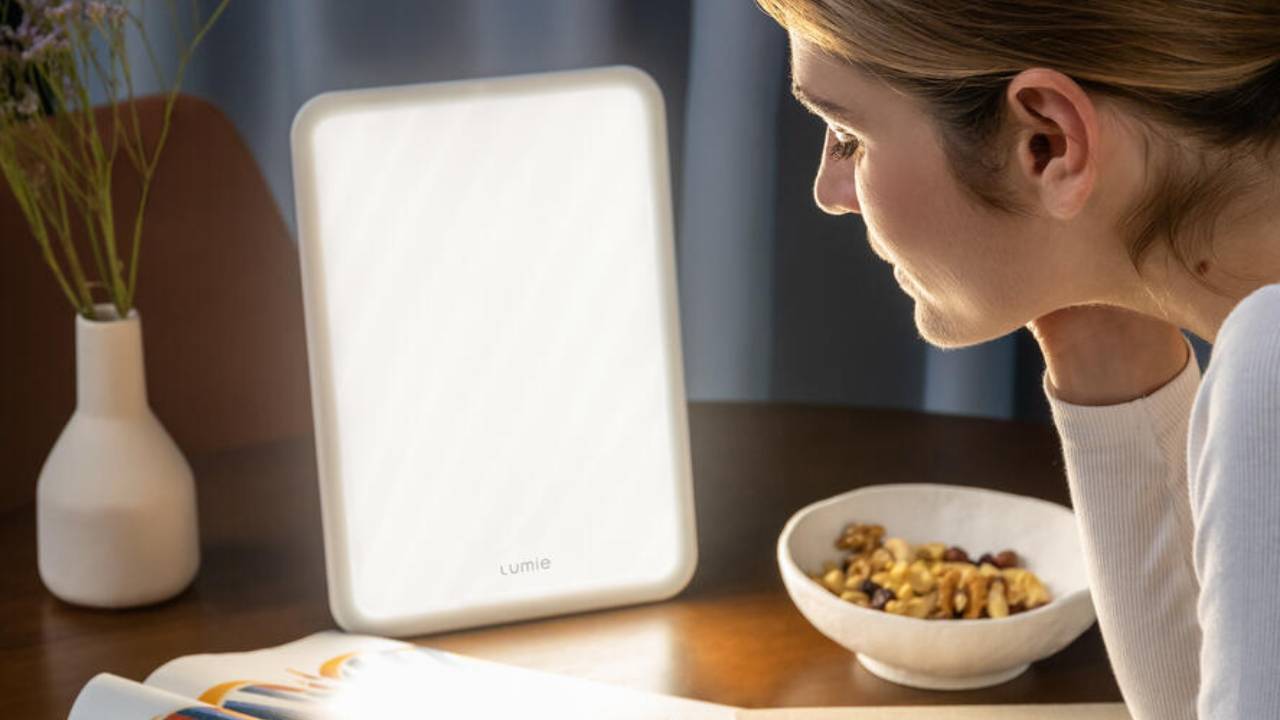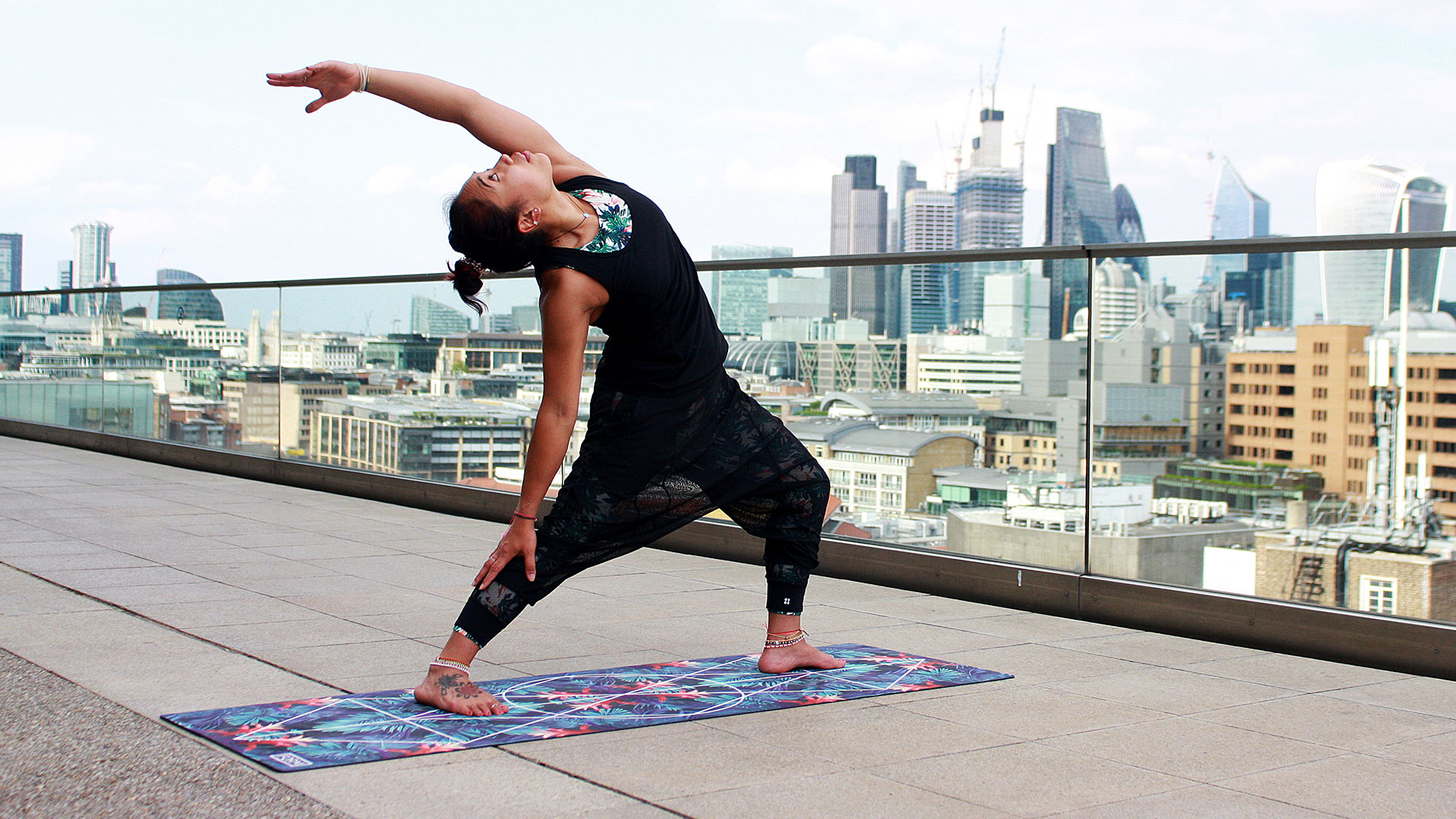SAD lamps: Why using one while doing yoga could prevent seasonal affective disorder
How to increase your serotonin levels through yoga and light therapy

Seasonal affective disorder affects 0.5-3% of the world’s population which is a substantial number of people suffering when daylight hours reduce. Symptoms of SAD consist of fatigue, tiredness, depression, low mood, lack of concentration, difficulty making decisions, low energy and increased sleep. This is not an exhaustive list and it can affect people in a variety of ways.
Solutions of how to cope with and manage the symptoms of SAD often involve light therapy and this is where the best SAD lamps come in.
What do SAD lamps do?
SAD lamps are designed, and some are medically certified, to boost the levels of serotonin in the body. The light they emit helps to increase serotonin production in the body with this light being measured in lux – the higher the lux, the brighter the light. A bright light helps to decrease feelings of tiredness, as it inhibits the production of melatonin which is the hormone that induces sleepiness, and boosts the feel-good hormone, serotonin.
Serotonin is responsible for mood regulation, digestion and memory, amongst other things. In terms of seasonal affective disorder, stimulating the production of serotonin can stave off low mood and even depression. It’s considered a good idea to sit in front of a SAD lamp for 30 minutes to an hour every morning during the darker months of the year when there is less natural light throughout the day (see how to use a SAD lamp for more details).

What does yoga do for your mood?
Like SAD lamps, yoga and meditation can boost the levels of serotonin in the body. Exercise, including yoga, is a way to increase serotonin production which can lead to feelings of happiness. Research has demonstrated that consistent yoga practice can lead to enhanced levels of serotonin.
Yoga and meditation regulates the nervous system dropping you into your rest and digest function. We spend a lot of time in fight or flight (or freeze) function and this can leave us feeling exhausted. It can also mean that our hormone production goes a bit crazy, as our stress hormones, such as cortisol and adrenaline, take over. When these hormones are being produced by the body, other hormone production will be cast aside until the threat is gone.
Have you ever felt stressed and noticed how your appetite decreases? This is a result of your body saving all its energy – it cannot give energy to the other functions but preserves it for the thing that matters in that moment, driven by cortisol and adrenaline. However, the way we live these days, the threat never really goes as we are over stimulated, overworked and overtired. Consequently, our cortisol and adrenaline remain increased but this will leave us with lower levels of other hormones such as serotonin.
Get all the latest news, reviews, deals and buying guides on gorgeous tech, home and active products from the T3 experts
All of our hormones are important for the effective functioning of our body but they need to be at the right levels. And the more we continue in this unhealthy, overstimulated stressed way, the longer we are without the correct levels of serotonin. It’s really no wonder that so many people suffer with low mood and depression and that this can be escalated by seasonal affective disorder, as our access to natural light is reduced during the winter months and this is one thing that helps stimulate the production of serotonin.
Therefore, practicing yoga can help your body find this homeostasis again, helping you to enter your parasympathetic nervous system, the rest and digest function, and allow your body the chance to produce those calming, happy hormones such as serotonin. By practicing yoga, your body gets a break from cortisol and adrenaline production and a chance to rest and find balance. Accessing our parasympathetic nervous system is so important for our overall health – none of us can be ‘on’ all the time and be truly healthy. Finding this balance through yoga leaves you feeling happier, healthier and in a better mood.

Can yoga and light therapy help tackle seasonal affective disorder?
The great thing about SAD lamps and yoga is that you can combine them for a double effort in boosting your serotonin levels. The amount of time required to sit in front of a SAD lamp is the same length as a decent yoga practice – 30 minutes to an hour. Rather than just sitting, you can give your body a helping hand and regulate your nervous system while soaking up the light from your SAD lamp, all helping to boost those levels of serotonin.
By calming the body through yoga, you're more receptive to serotonin production as you're in a relaxed state, so this production will be easier. It’s recommended to use SAD lamps in the morning. Yoga can be practiced any time of the day but it’s a fabulous thing to do when you wake up. Combining this with using your SAD lamp means you're helping to regulate your nervous system straight away as your day begins which can boost serotonin levels and balance out hormone production by accessing that rest and digest state while practicing in front of a bright light helps your body recognise it is daytime and shake off those feelings of tiredness. Triple bonus – calm state, better serotonin production and reduced tiredness.
There is the added benefit of a SAD lamp adding a level of cosiness to your practice. Although it’s a bright light, if you’re practicing yoga in the early hours of the morning during winter, this bright light is a welcome addition as it creates an atmosphere for your practice while also waking you up. In a way, it can act as motivation to practice during the dark, cold winter months as your body will crave that bright light as it feels good for you. Otherwise, dragging yourself out of bed in winter to get on your yoga mat can really feel like too much effort but with this bright light, your yoga mat will be calling you.
Kat has 10 years of yoga teaching experience with further training in supporting injured students. She is qualified to teach Yin Yoga, Hormone Yoga Therapy and more traditional forms of Hatha yoga. She also has a certificate as a Yoga Therapy Practitioner.